Art World
Here Are the 9 Biggest Art-World Controversies of 2022, From Climate Activists Attacking Masterworks to A.I. Replacing Artists
So much outrage.
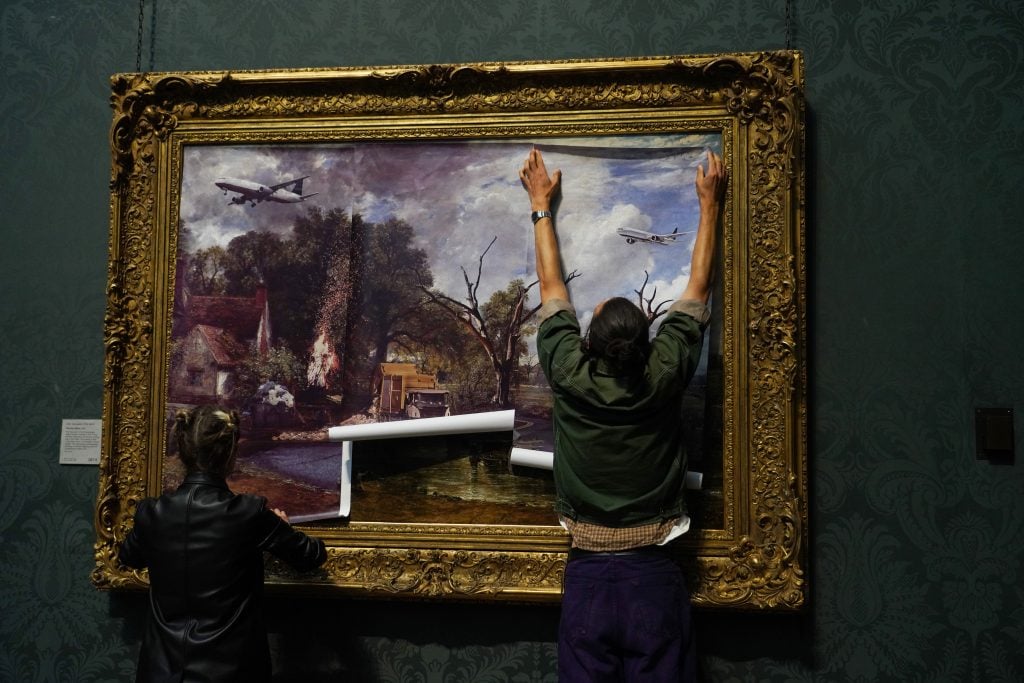
So much outrage.

Eileen Kinsella &
Taylor Dafoe

If eras are remembered for their debates, then this year won’t soon be forgotten—not in the art world at least. 2022 was a year chock-full of controversies in our industry as museum masterpieces were covered in mashed potatoes, artists fretted about being replaced by robots, and Christie’s tried to be cool but just came off as offensive.
Now, with the turning of the calendar page comes an opportunity to take stock of all those stories and the anxieties that informed them. Read on for our reflections on the best and worst art-world dust-ups of the year, and how they were resolved—or not. Mostly not.
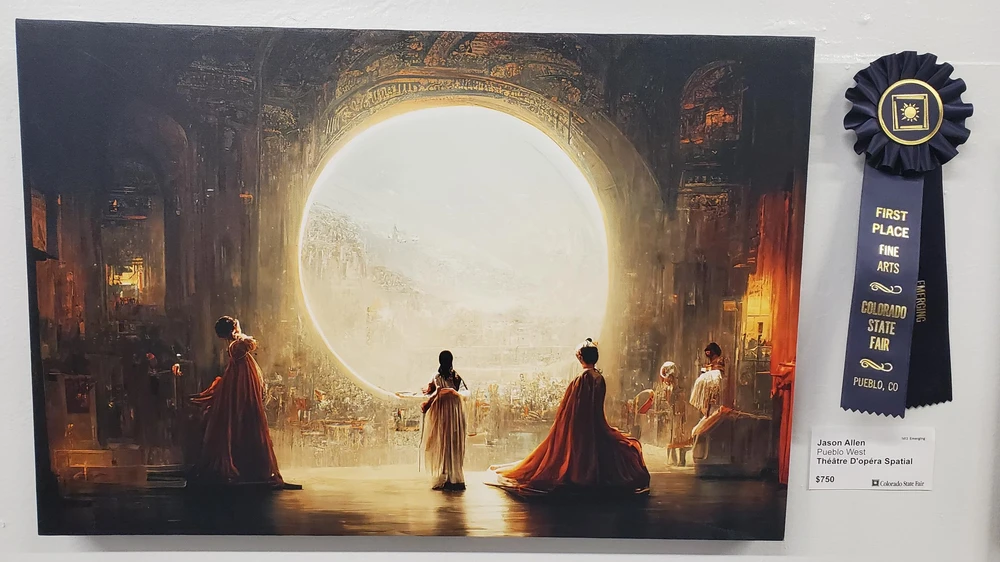
Jason Allen Théâtre D’opéra Spatial (2022) at the Colorado State Fair.
If NFTs dominated debates about the future of art in 2021, this year the contested technology was Artificial Intelligence. It seemed to crystallize in August, when a man named Jason Allen took home the $750 top prize at a Colorado state fair for his Théâtre D’opéra Spatial, a fantastical scene generated by the Midjourney A.I. program. As news of Allen’s win spread, so too did an internet argument about A.I.: “We’re watching the death of artistry unfold right before our eyes,” read one Twitter post.
Since then, the sophisticated creation of programs like DALL-E 2, Dream Studio, and Lensa have continued to fuel the A.I. furor, with the latter, an image-editing app, sparking a tangential discussion about how artists aren’t being compensated for their works that are used to “train” these programs.
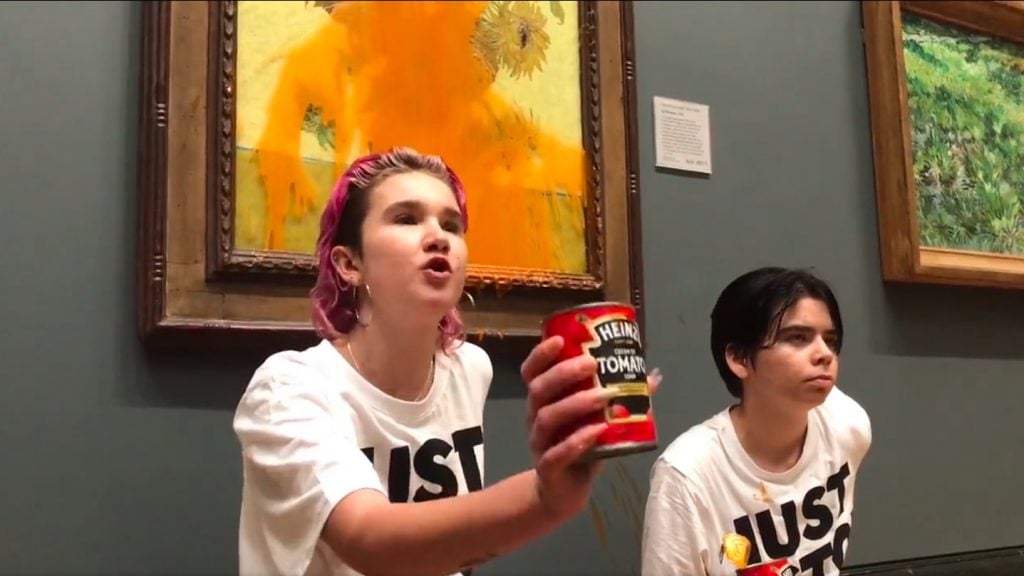
Phoebe Plummer and Anna Holland from Just Stop Oil addressing the public after throwing tomato soup on Vincent Van Gogh’s Vase with Fifteen Sunflowers (1888). Screenshot from @damiengayle.
For the last six months, our feeds have been filled with footage of eco-activists messily attacking museum artworks to protest the use of fossil fuels. Starting in June, members of the collective Just Stop Oil glued themselves to four paintings across the U.K. In October, a pair of protestors from Germany’s Letzte Generation group threw buckets of mashed potatoes on Monet’s Haystacks (1890), while the next month three activists from Italy’s Ultima Generazione tossed pea soup at Van Gogh’s The Sower (1888).
In total, roughly two dozen iconic artworks—including pieces by Picasso, Vermeer, and Klimt— have been targeted by different groups. If their goal was only media coverage and Twitter clicks, the campaign has been a runaway success. But many have been left mulling the same question: Do the activists’ methods distract from their message? A lot of critics seem to think so. One called the vandals “embarrassing,” another referred to them as “pathetic.” “Take it out on the oil companies you morons, not on innocent art,” one person tweeted. In November, 92 museum workers around the world co-signed an open letter decrying the vandals’ actions.
“Because these actions are based on shocking people into paying attention, the campaign has only two ways to go—to peter out as the media begins to treat them as P.R. stunts, or to escalate to keep up the momentum,” Artnet News critic Ben Davis wrote in November. It seems the activists may have the latter avenue in mind.

The Bored Apes used as avatars by Yuga Labs cofounders Wylie Aronow (fka Gordon Goner) and Greg Solano (fka Gargamel). Courtesy of Twitter.Way back in February, an investigative reporter for Buzzfeed News exposed the identities of—or “doxed”—two founders of the Bored Ape Yacht Club: Greg Solano and Wylie Aronow, who operate online under the names Gordon Goner and Gargamel, respectively. The move didn’t sit well with the crypto community, which by and large holds the ultra-popular NFT company in high esteem. “What @BuzzFeed did today to the #BAYC founders was not only unprofessional—it was downright dangerous,” wrote one Twitter user at the time. Others even threatened to publicize the reporter’s home address as a form of revenge.
At the core of the episode was a question that still looms large over the crypto space: Do the owners of highly profitable crypto businesses have a responsibility to make their identities known, as is the legal obligation of executives atop publicly traded companies? Some argue that such transparency is vital to maintaining ethical business practices, while other Web3-ers believe it goes against one of their community’s central tenets: real-world anonymity.
But anonymity and the other perks that come from working in a deregulated field may not be on the table for people like Solano and Aronow much longer, as the government is reportedly looking to impose financial regulations on crypto-assets. In October, for instance, the U.S. Securities and Exchange Commission (SEC) launched a private probe into BAYC’s parent company to determine if the business’s digital assets should be subject to the same disclosure and registration rules as stocks and other securities.
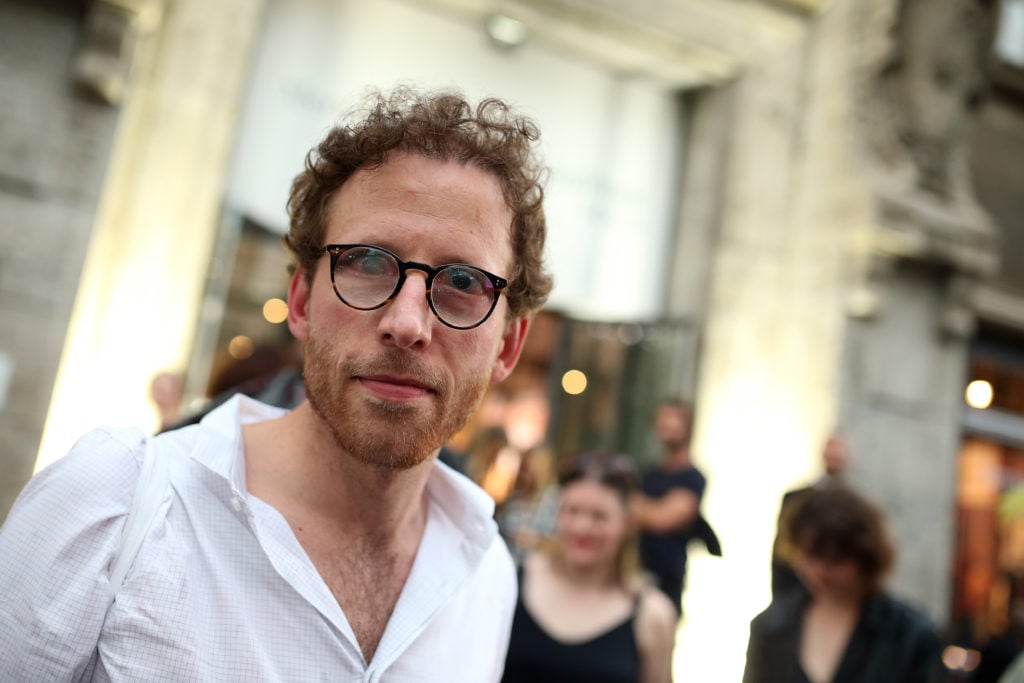
Johann König. Photo by Thomas Niedermueller/Getty Images for IMG.
In late August, the prominent German newspaper Die Zeit published an investigation outlining allegations of abusive behavior and sexual harassment against dealer Johann König. Die Zeit’s article was based on three years of investigation and research.
König has repeatedly and vehemently denied the allegations and is locked in a legal battle with the newspaper over what his lawyer Simon Bergmann has called “suspicious reporting.” At the end of October, König’s lawyers won a temporary injunction against Die Zeit and the article disappeared from the internet for about 24 hours. When it reappeared, it was partially redacted to comply with the ruling. Other publications that had repeated these allegations were also obliged to redact or remove their own articles.
In mid-December, another German court in Hamburg ruled largely in favor of the paper, ruling that it was legal to publish but stipulated that several additional partial phrases must be cut.
Numerous prominent artists, including Monica Bonvicini, have since dropped off the gallery’s roster.

The family of retired British geologist Jim Fitton (third from left) has launched a petition asking for the Foreign Office to intervene in his case.
In June, a British tourist and retired geologist was sentenced to 15 years in an Iraqi prison for taking a dozen pottery shards from an unguarded archaeology site. Not surprisingly, the case drew international attention. James Fitton, who is in his mid-60s, was found guilty of looting antiquities and hit with the maximum penalty allowable under a holdover law from the Saddam Hussein era.
Fitton was on an organized archaeology tour when he took the shards from the Sumerian site of Eridu, an unexcavated landmark in southern Iraq. He insisted he did not know he was breaking the law, and said that he took them as souvenirs. Fitton was arrested at a Baghdad airport on March 20 after officers discovered the objects in his suitcase.
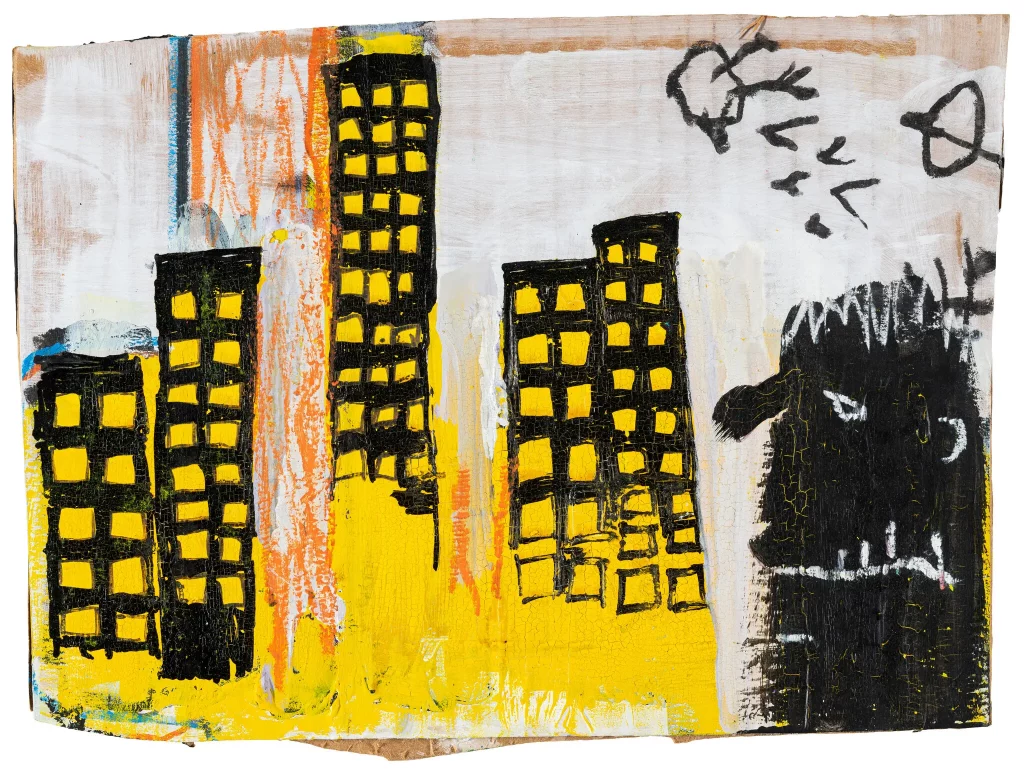
Untitled (Yellow and Black Buildings), which was once featured in the “Heroes and Monsters” show. Via Orlando Museum of Art.
On June 24, FBI agents raided the Orlando Museum of Art in Florida, removing every single painting from “Heroes and Monsters,” a show that claimed to introduce 25 never-before-seen works by Jean-Michel Basquiat. Had they been genuine, the show would have marked a lucrative milestone: Basquiat’s auction record stands at $110.5 million.
But there was one especially glaring red flag: a work that Basquiat allegedly painted on the back of a FedEx box. “The corporate typeface on the cardboard was created in 1994, according to its designer,” the New York Times reported. The artist died in 1988.
A wave of top museum staff departed, including director Aaron De Groft, who brought the show to the museum. Especially cringeworthy was the revelation that De Groft had threatened University of Maryland art historian Jordana Moore Saggese when she sought to distance herself from a report she was commissioned to write about the authenticity of the works in the show. When Saggese requested that her name not be tied to the exhibition, De Groft replied in an email: “You want us to put out there you got $60 grand to write this? Ok then. Shut up. You took the money. Stop being holier than thou. . .Do your academic thing and stay in your limited lane.”
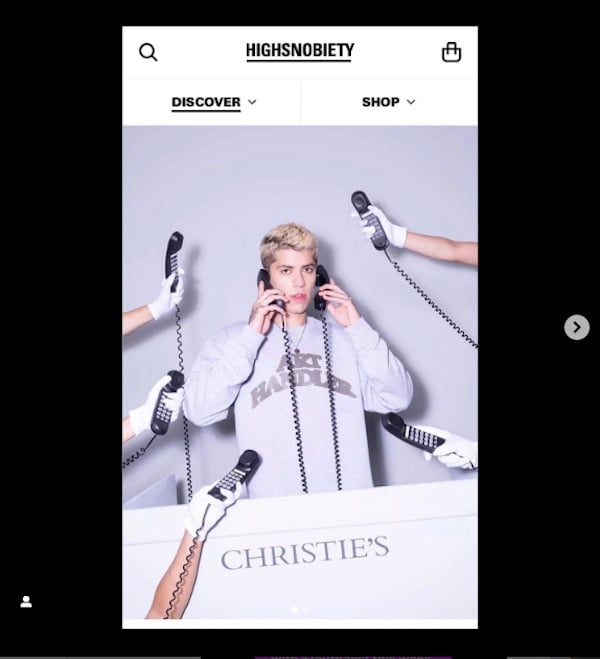
Image via Instagram
Christie’s and lifestyle brand Highsnobiety scrambled to erase almost all digital evidence of a jointly created art handler-themed apparel line after it sparked a furious backlash from actual art handlers, who called the project tone-deaf and offensive. Immediately after its introduction, Christie’s organized a meeting with handlers to “address hurt feelings.” Christie’s called the handlers “valued members of our global team—dedicated, skilled, and hard-working,” and added that all “art handler”-labeled merchandise had been removed from the Highsnobiety website.
In one photo, a model standing at a Christie’s branded auction rostrum juggled several landlines as outstretched, white-gloved hands thrust additional phones in his direction. The marketing campaign seemed to be a take on the type of competitive, high-stakes bidding activity that goes on at major evening sales, but which is usually fielded by senior auction house specialists and executives, not the folks who carefully transport and hang the pricey masterpieces.
It didn’t help that the clothing items carried lofty prices, ranging from $50 for a tote bag, to $65 for a t-shirt, and $125 for a sweatshirt emblazoned with the label “Art Handler.”
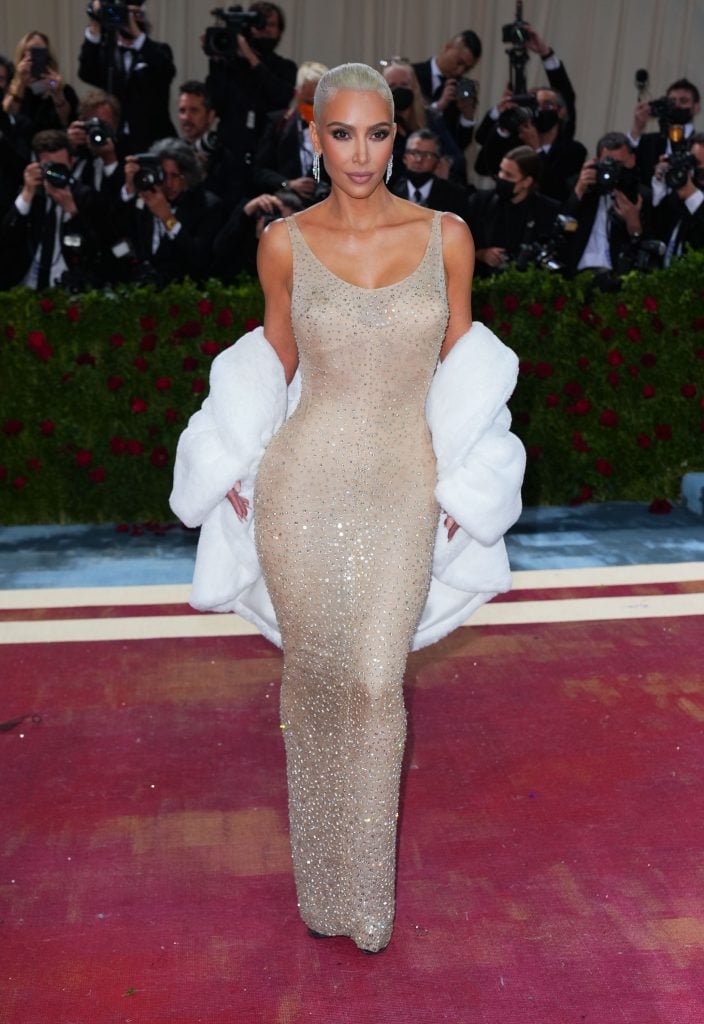
Kim Kardashian attends the 2022 Met Gala. Photo by Gotham/Getty Images.
Kim Kardashian sparked outrage after wearing an iconic Marilyn Monroe dress to the celebrity-saturated fashion party of the year, the Met Gala, hel at the Metropolitan Museum of Art in May. The public outrage, much of it from textile conservators, was so intense that the International Council of Museums eventually issued renewed guidelines on handling historic garments.
“Historic garments should not be worn by anybody, public or private figures,” the organization said in a statement. “Prevention is better than cure. Wrong treatment will destroy an object forever.”
The dress in question was the same one that Monroe wore in 1962 when she serenaded John F. Kennedy at Madison Square Garden with an unforgettable version of “Happy Birthday, Mr. President.” Kardashian had borrowed the dress from a Ripley’s Believe It or Not! collection in Orlando, not an accredited museum. The novelty museum had bought the work at auction in 2016 for $4.8 million. Kardashian admitted that she dropped 16 pounds to try to fit into the dress.
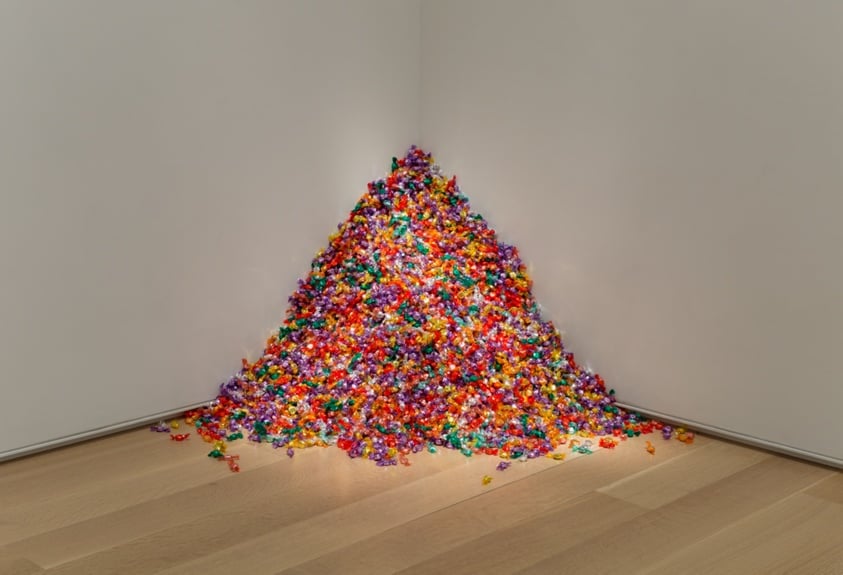
Felix Gonzalez-Torres, Untitled (Portrait of Ross in L.A.) (1991). © The Felix Gonzalez-Torres Foundation.
In September, a Twitter user pointed out that the Art Institute of Chicago had swapped out the wall text for Felix Gonzalez-Torres’s seminal Untitled (Portrait of Ross in L.A.) (1991), leaving out a previous reference to the artist’s late partner, Ross Laycock, who died from an AIDS-related illness the same year the piece was created. The post promptly racked up thousands of likes and retweets, as a debate about the rhetoric around Gonzalez-Torres’s work raged on.
“How can the Art Institute engage in such a brazen act of queer erasure?” read an op-ed that appeared in a local paper. “By removing any reference to HIV/AIDS and queer sexuality, the curatorial staff and the Institute, as a whole, have stripped the work of its personal resonance and political power for the many, many visitors not already familiar with the work.”
In response to the kerfuffle, the museum amended the label to include mention of Laycock and his diagnosis, but many felt the new text still lacked the necessary references to Gonzalez-Torres himself—almost as if it was trying to decenter the artist’s own biography in the work.
In fact, that may have been exactly the aim of the label—and it was likely Gonzalez-Torres’s estate that was behind the move. Other recent presentations of the late artist’s work have similarly omitted language around the AIDS epidemic and the artist’s homosexuality, many online commenters pointed out.